Full Video is at the bottom of this page
Have you ever seen a video of someone wave surfing or perhaps paragliding, and you immediately think “that is easy”?
Similar thinking naturally occurs when viewing a video of a failed attempt to fight back, or a self-defense move that has gone wrong; however, these types of incidents are often complex and required previous analysis, understanding, and practice -among other factors- for us to be ready to act naturally and successfully.
This is exactly what we hope to accomplish in these articles, to get you to think critically before you are involved in a similar situation. Let’s review this case study.
An armed driver pulled out of his vehicle at gunpoint
The driver of a parked vehicle remains seated inside the vehicle while talking to another male, when a small vehicle approaches the victim’s vehicle, and quickly a tall, slender male exits that offender’s vehicle from the rear left door, gun in hand.
At this point, the male standing outside the parked vehicle noticed the armed offender and immediately raises his hands up in the air as he backs away from the vehicle to later run away. The offender then focuses his attention on the driver of the parked vehicle and proceeds to open the door demanding the driver to exit the vehicle.
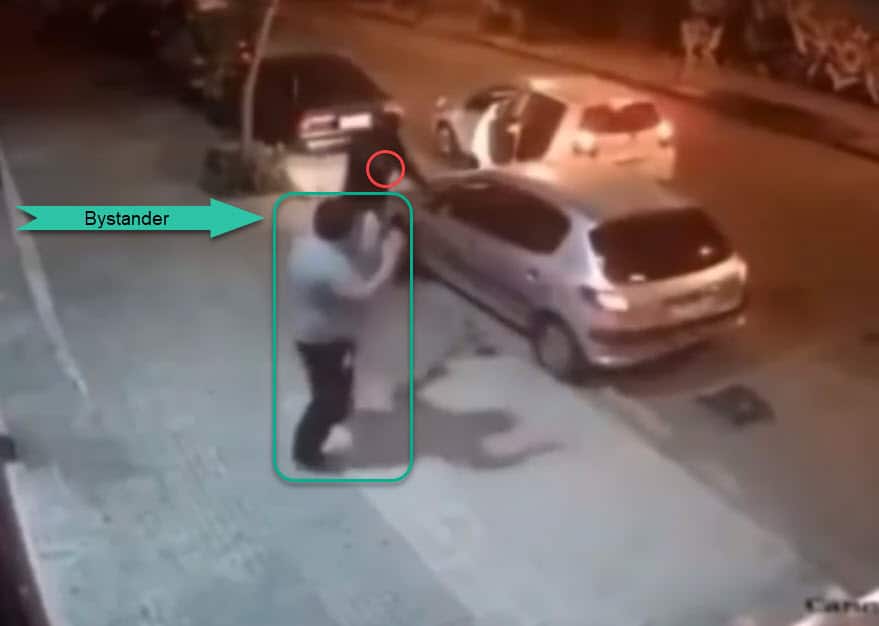
The driver exits the vehicle and once he is standing on the sidewalk he raises his hands in the air as a sign of compliance.
Moments later the victim backs away from the offender while still keeping his hands up in the air, the offender momentarily turns to the victim’s vehicle as if looking for additional occupants, as well as looking along the sidewalk to make sure no one will sneak on behind him.
He then proceeds to check under the shirt of the victim -presumably for weapons-.
When the victim realizes that the pistol he is concealing at the waist in a 4 o’clock position will be found, he (victim) decides to unholster it to use it, while simultaneously using his support hand (L) to grab the dominant hand (R) which the offender held the gun. In doing so, the victim repositioned the line of fire of the offender’s handgun away from him while he deployed his own weapon to defend himself.

While deploying his handgun, the victim takes a step backwards with the right leg, this is done to increase the angle of separation between his handgun and the support hand of the offender. In this process, the victim tends to lean back which is a risky move but in return, he gains space from the offender so the trade-off is advantageous in this situation.

By planting his right foot on the ground, the victim gains the traction to launch forward towards the attacker, while still maintaining control of the attacker’s gun hand. The attacker remains in a neutral position with slight leverage towards the victim. This is both a kinesiological mistake, and it is emotionally neutralizing for the attacker, as he lost the oppressing advantage.

The victim aims at the attacker while keeping the line of fire from his attacker away from his body. A second later the victim opens fire at the attacker impacting him somewhere in the open torso.
Once the attacker is impacted he is short-circuited and instinctively retrieves away from the threat as the victim fires another shot at the attacker.
Notice how the victim is shooting with one hand.
Given the distance between the front of the firearm and the impact area, 2.5 meters or less, the priority is timing to get shots on target, over surgical accuracy since the distance allows for that trade-off.
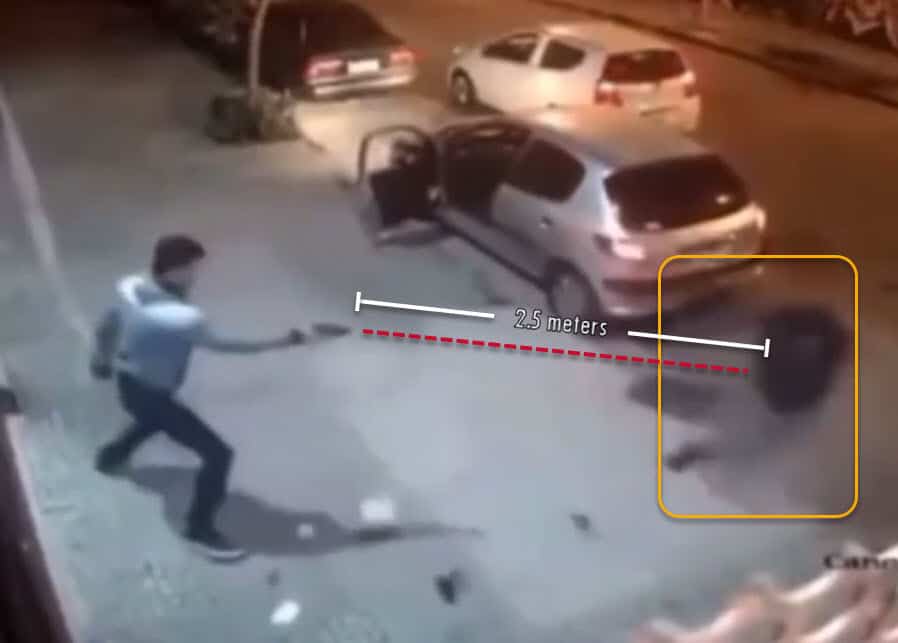
When the attacker runs away, the victim regains his more accurate stand, and shoots the handgun with a two-hands grip.
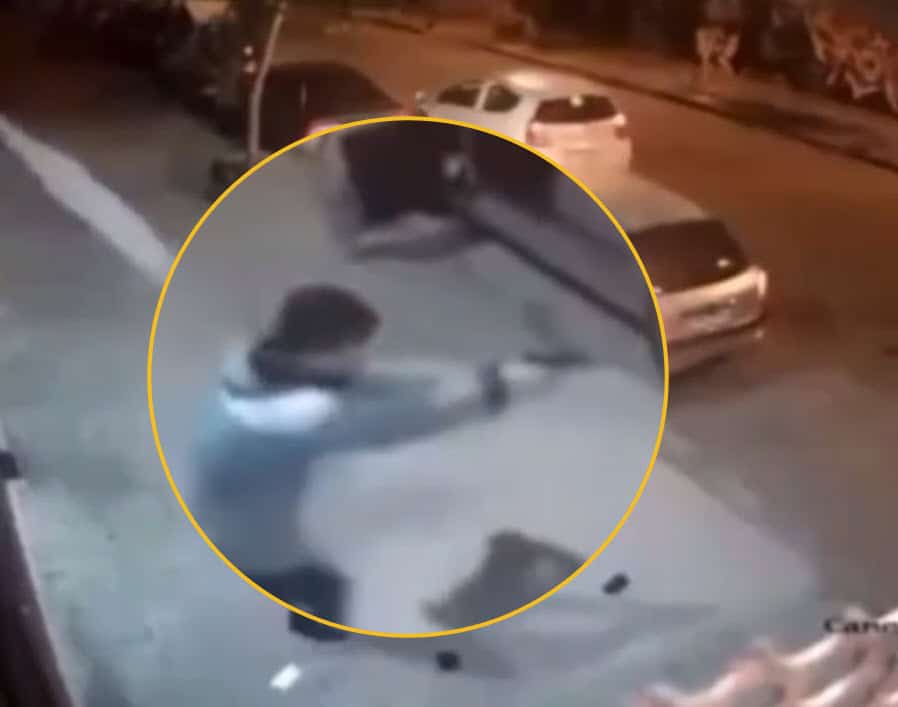
The victim shoots at least 3 times after shooting at the attacker, then the victim lowers his handgun while the attacker is within dangerous shooting distance from the victim, as we will see in the rest of the analysis.
The victim’s lowering of the handgun after every shot is a bad habit, that in this case contributed to turning the odds against him.
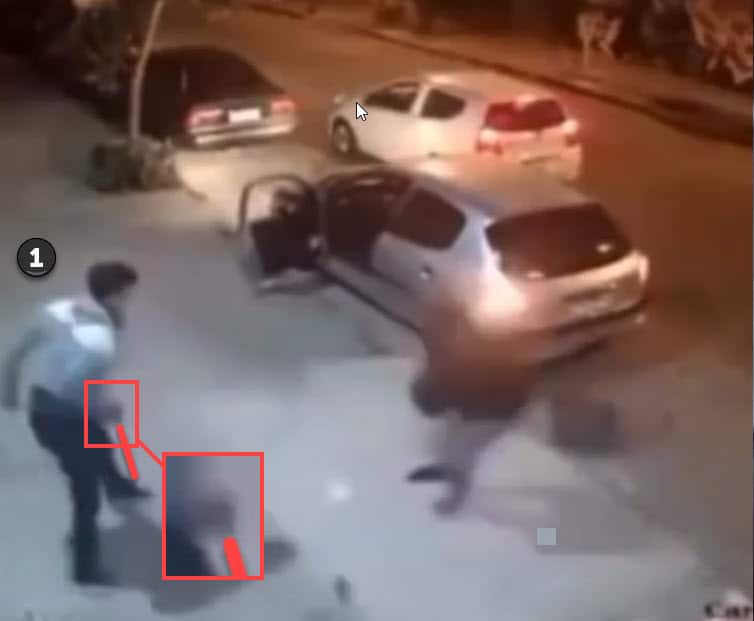

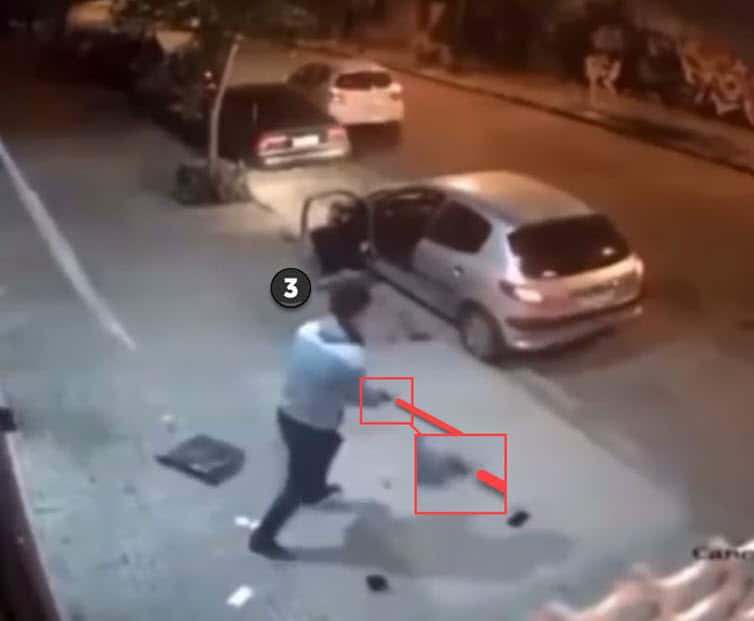
While the vehicle where the attacker came from has driven down the road, the attacker commences running down the street and in the direction to catch up with the vehicle.
At the same time, the attacker turns around (while running) and begins shooting back at the victim.
Given that the street is intended for the parking of one row of vehicles while allowing for 2 additional car lanes to travel alongside, one can deduct the following:
| Minimum Distance | Max Distance | |
| Parked vehicle lane width | 3.048* | 3.6576* |
| First Lane width | 3.048* | 3.6576* |
| Second Lane Width | 3.048* | 3.6576* |
| Victim’s gun to the vehicle | 2.5± | 3± |
| Attacker’s gun from far sidewalk | -0.25± | -0.50± |
| Total distance summary from the victim to the attacker | 11.39 Meters | 13.47 Meters |
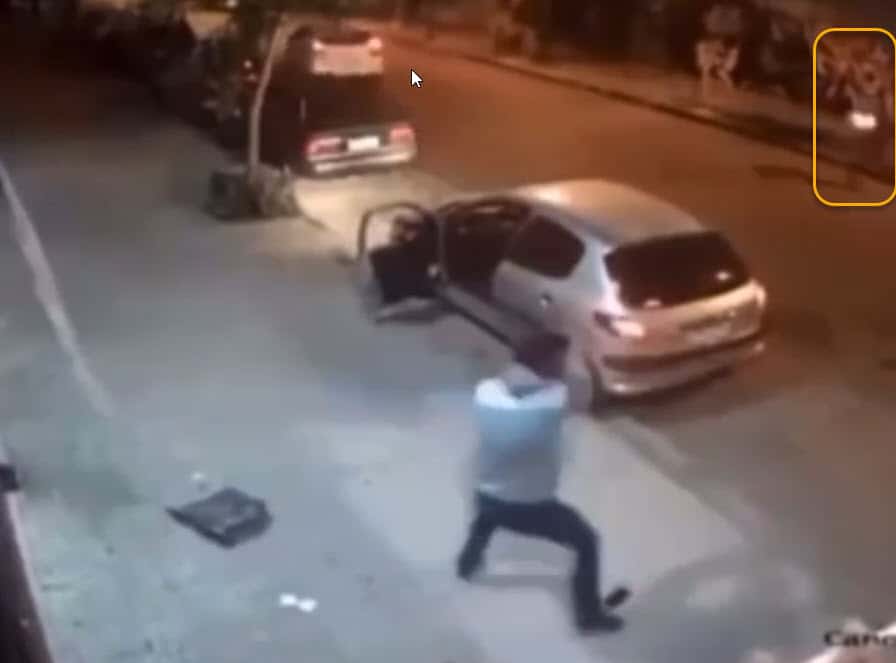
The victim is impacted in the support hand (L) by one of the rounds fired from the fleeing attacker.
The victim goes down to the ground, instinctively seeking cover between his vehicle and the attacker.
While placing his support hand on the ground he immediately leaves a bloodstain on the floor.
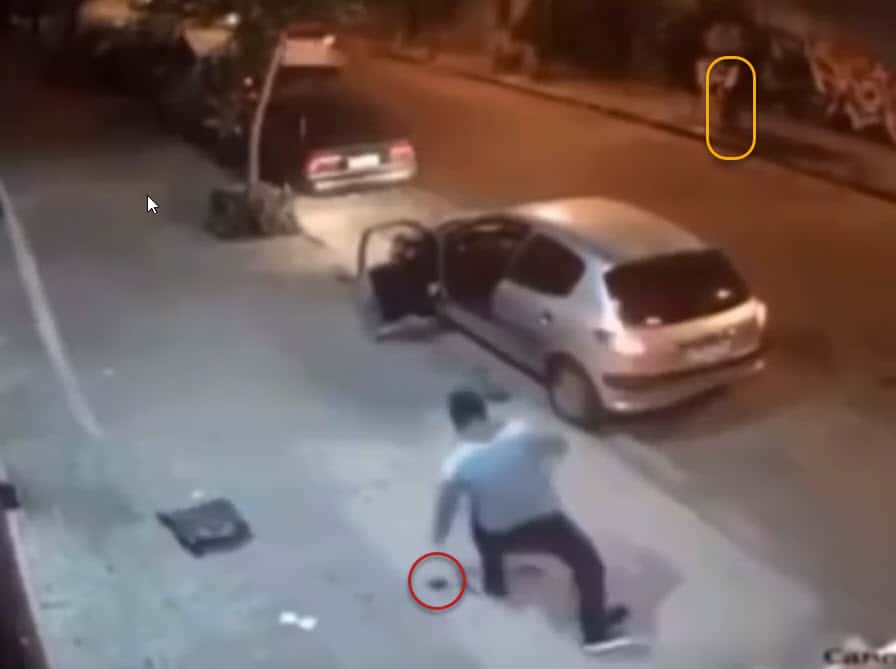
He then -literally- jumps up from the floor and attempts to reengage the attacker, but when the attacker shoots back, the victim takes cover behind his vehicle again.

The victim notices the attacker continues to run away from him when the attacker shoots back again but from a distance of ± 18 meters, and at a restrictive angle about 200º± from the direction he is running to.
The combination between distance, angled of his torso, shooting while moving, plus being shot at least once, lessen the effectiveness of the aggressor during this second shot.
The victim at this time acknowledges the injury to his hand/forearm, and it is at this point that most gunshot wound victims start going into emotional shock, where the shift of focus from the imminent threat changes to their realization of being shot.
The victim places the handgun on the ground *tactical mistake* and focuses his attention on his injury.
The risk of tunnel vision persists at this time, where the next set of thoughts are focused on processing what to do. This causes him to eventually walk away from his firearm on the floor.
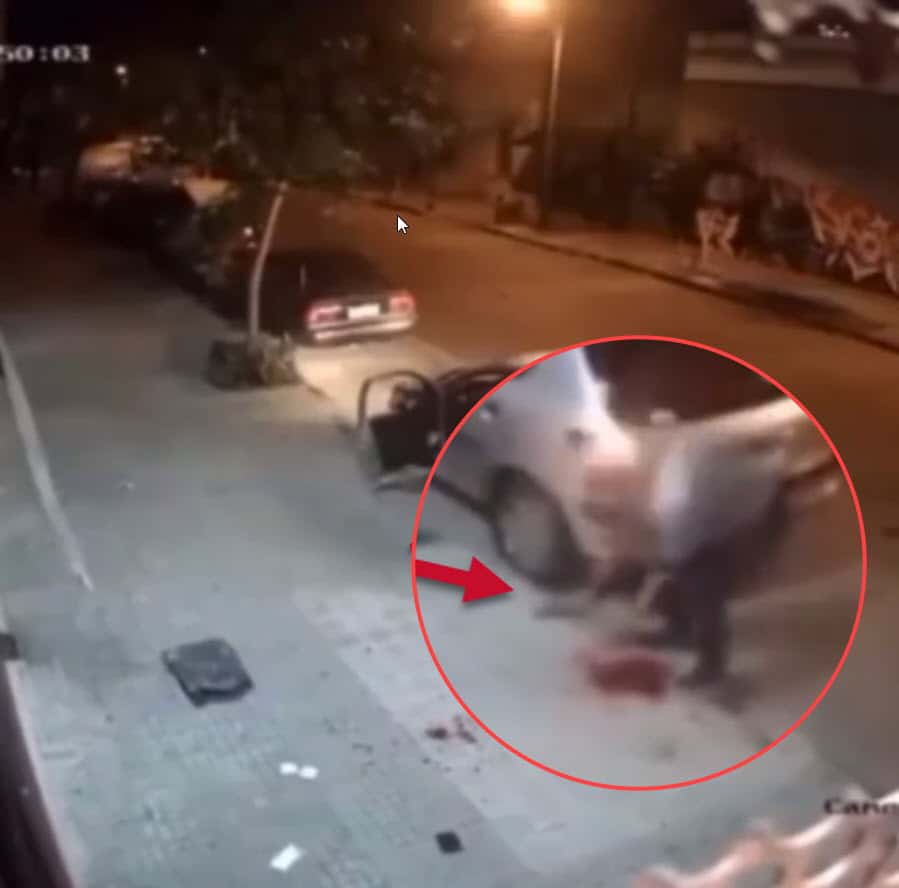
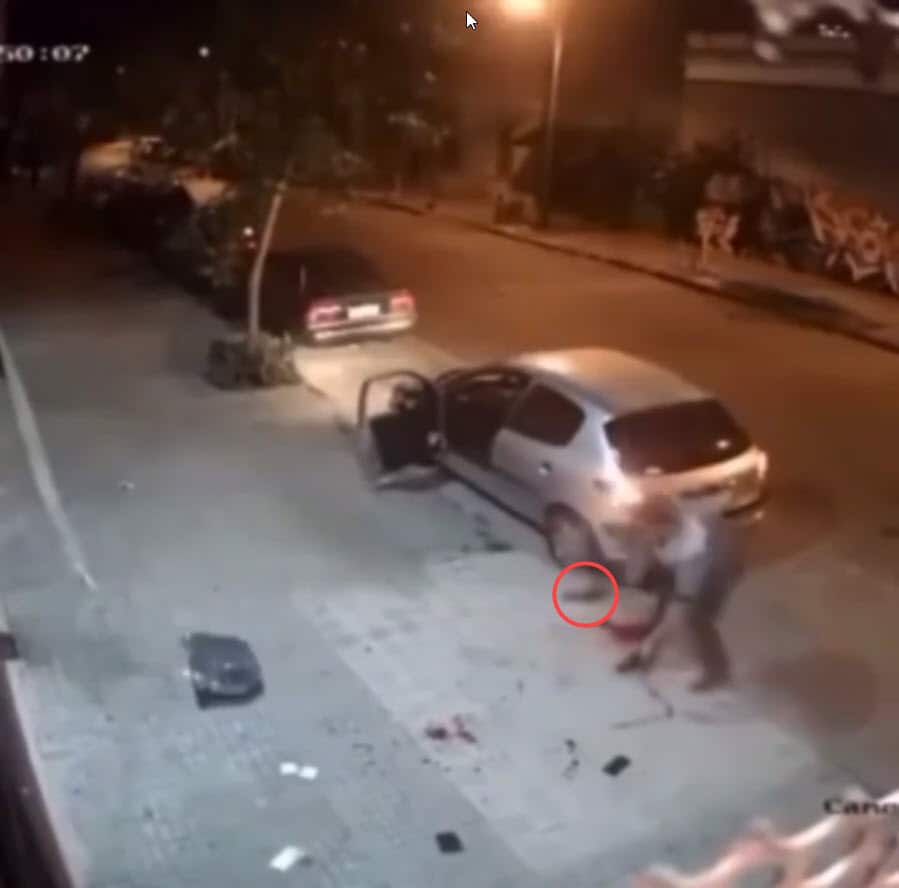
The main issue here is that the victim’s brain is performing many thought processes at the same time which creates what may be best understood as a bottleneck.
It is in situations like these where we default to what comes naturally to us, more specifically what is naturally flowing due to training.
Urban Survival considerations during an armed encounter
Effective defensive distances
An understanding and proficiency in utilizing “effective defensive distances” to one’s advantage is a determining factor in surviving an armed encounter.
Ron Ackerman
The type of weapon (firearm, edge, explosive, chemical) used against you dictates your defensive options.
In the case in point, the distances oscillate from arm’s length to <20 meters.
The longer the distance the greater the chance for either one of the shooters to miss the target, while conversely the closer the distance the higher the possibility to be able to redirect the opponent’s firearm line of fire, allowing you to deploy your own weapon and counterattack.
This works best with the firearm but should be avoided when the opponent has an edged weapon, in such case you want distance between you and the edged weapon.
The same is true for explosive weapons and/or chemical weapons, in these particular scenarios distance is your best defense.
Firearm required actions after an armed encounter
One of the things the victim should have done in this case is:
- Change the magazine immediately after the shooting -if he carried a loaded spare on him, or in the car-.
- Re-holster the firearm to have it ready in case another threat presents itself due to him being a target of opportunity.
These actions must be done rather quickly due to the risk of bleeding out. Thus the importance of including this actions as part of your firearm training.
Tactical Medical Care
Most untrained people will fail to address a bleeding situation for two main reasons:
- Lack of first aid knowledge appropriate to treat the particular wound.
- Failure to carry the basic necessary tools to treat and contain bleeding from the particular wound.
In this case, the gunshot to his (L) hand/forearm has severed an artery -based on the amount and rate of bleeding seen-, this situation is critical as there are no bystanders to call for help or render basic lifesaving treatment to the victim.
At this point, the external blood loss must be stopped before the victim goes into hypovolemic shock, and dies from external blood loss.
Full Video
Cited References:
Lane Width. [Updated 2015 Jul 24]. National Association of City Transportation Officials. Retrieve from: https://nacto.org/publication/urban-street-design-guide/street-design-elements/lane-width/
Taghavi S, Askari R. Hypovolemic Shock. [Updated 2020 Jul 20]. In: StatPearls [Internet]. Treasure Island (FL): StatPearls Publishing; 2021 Jan-. Available from: https://www.ncbi.nlm.nih.gov/books/NBK513297/
